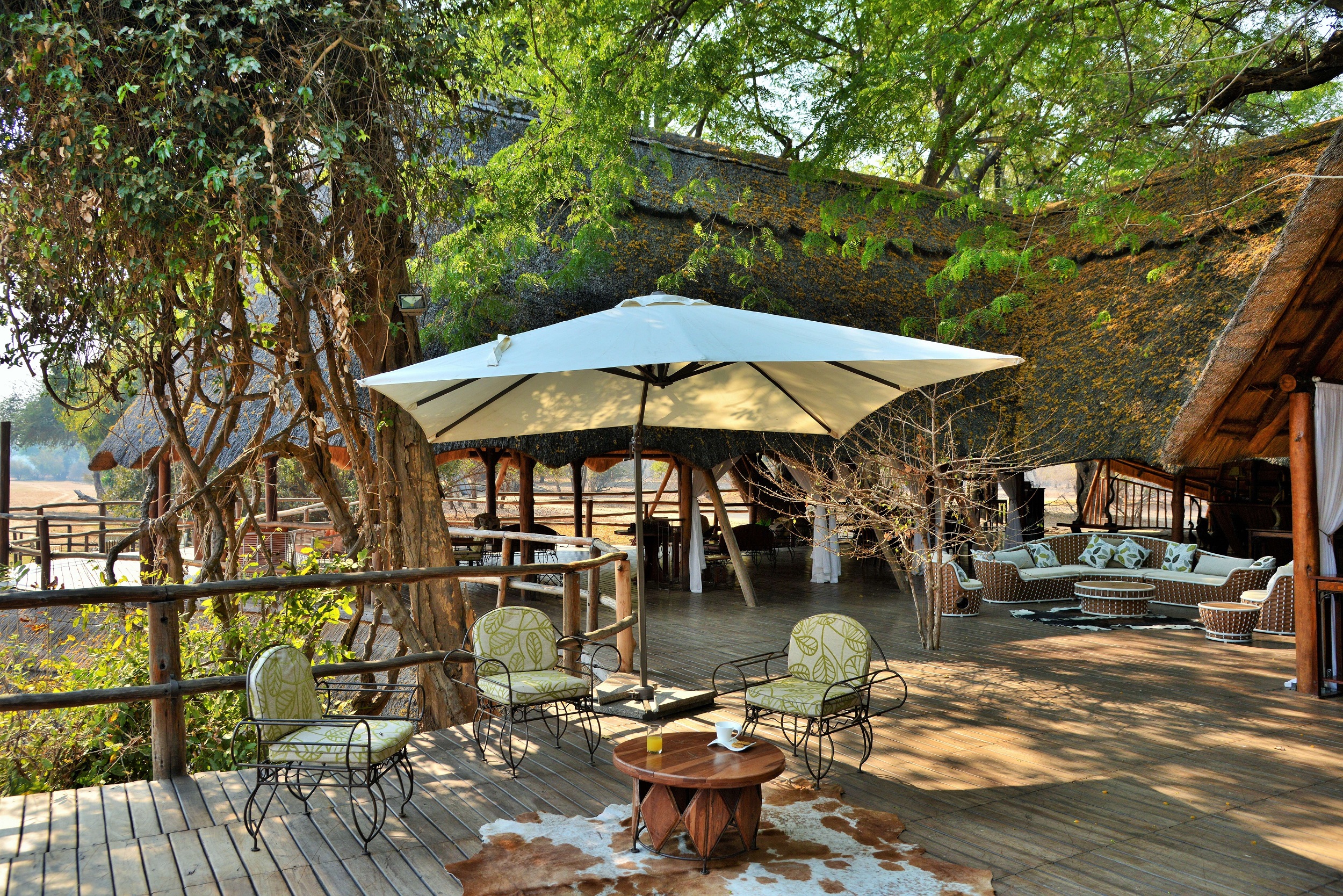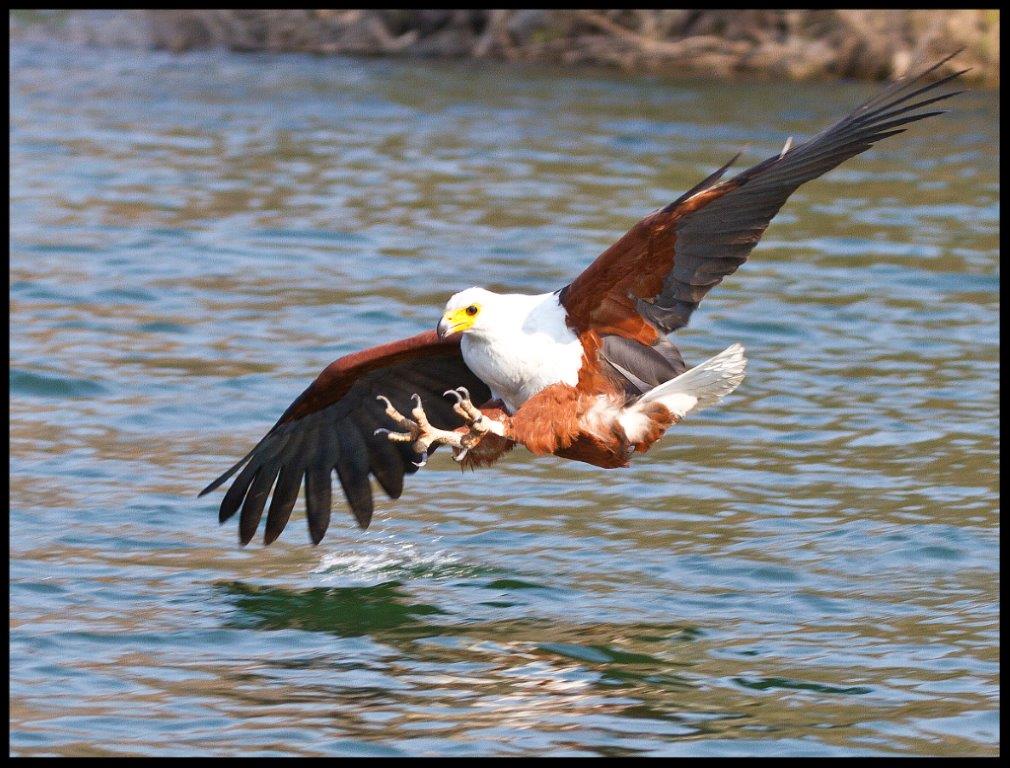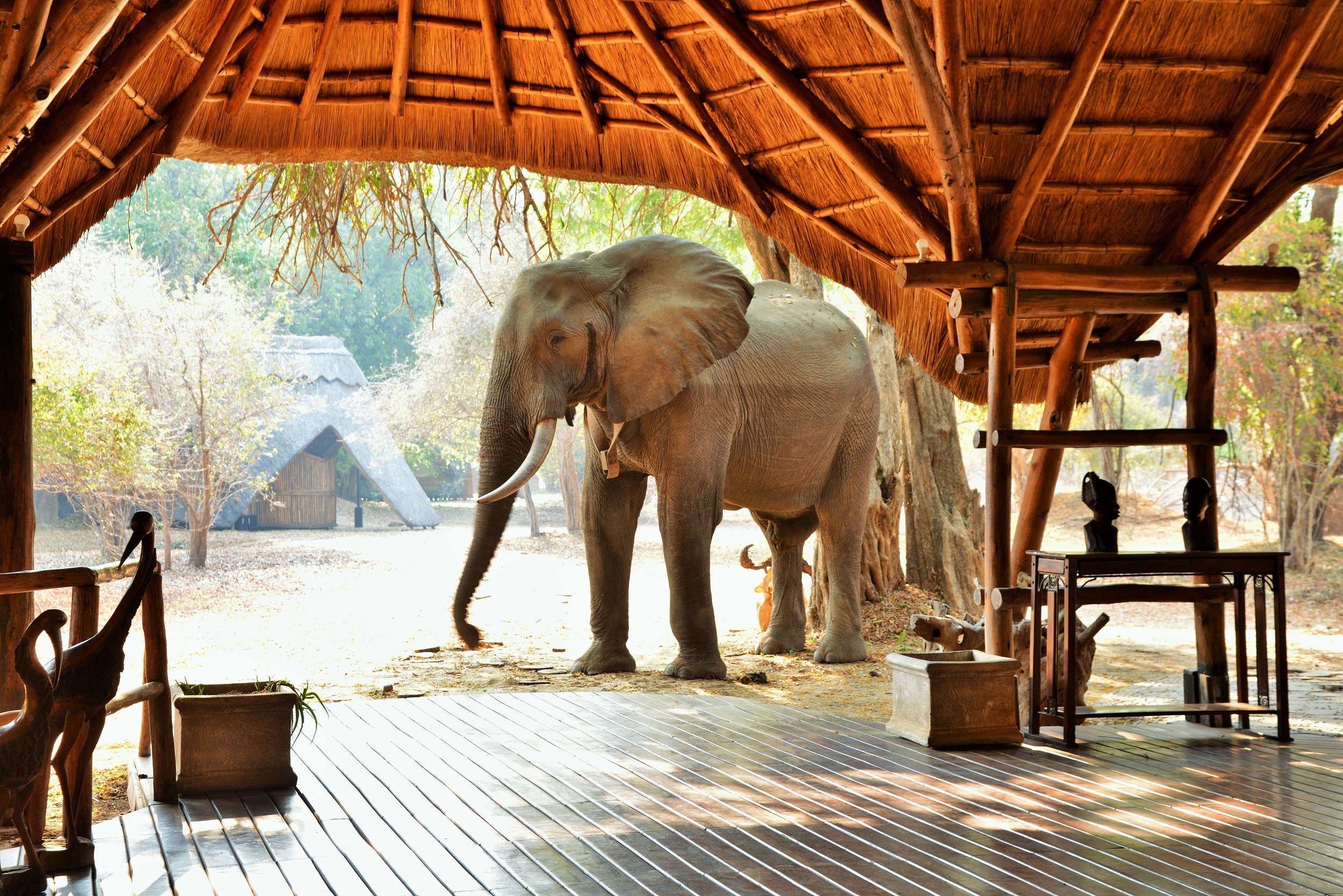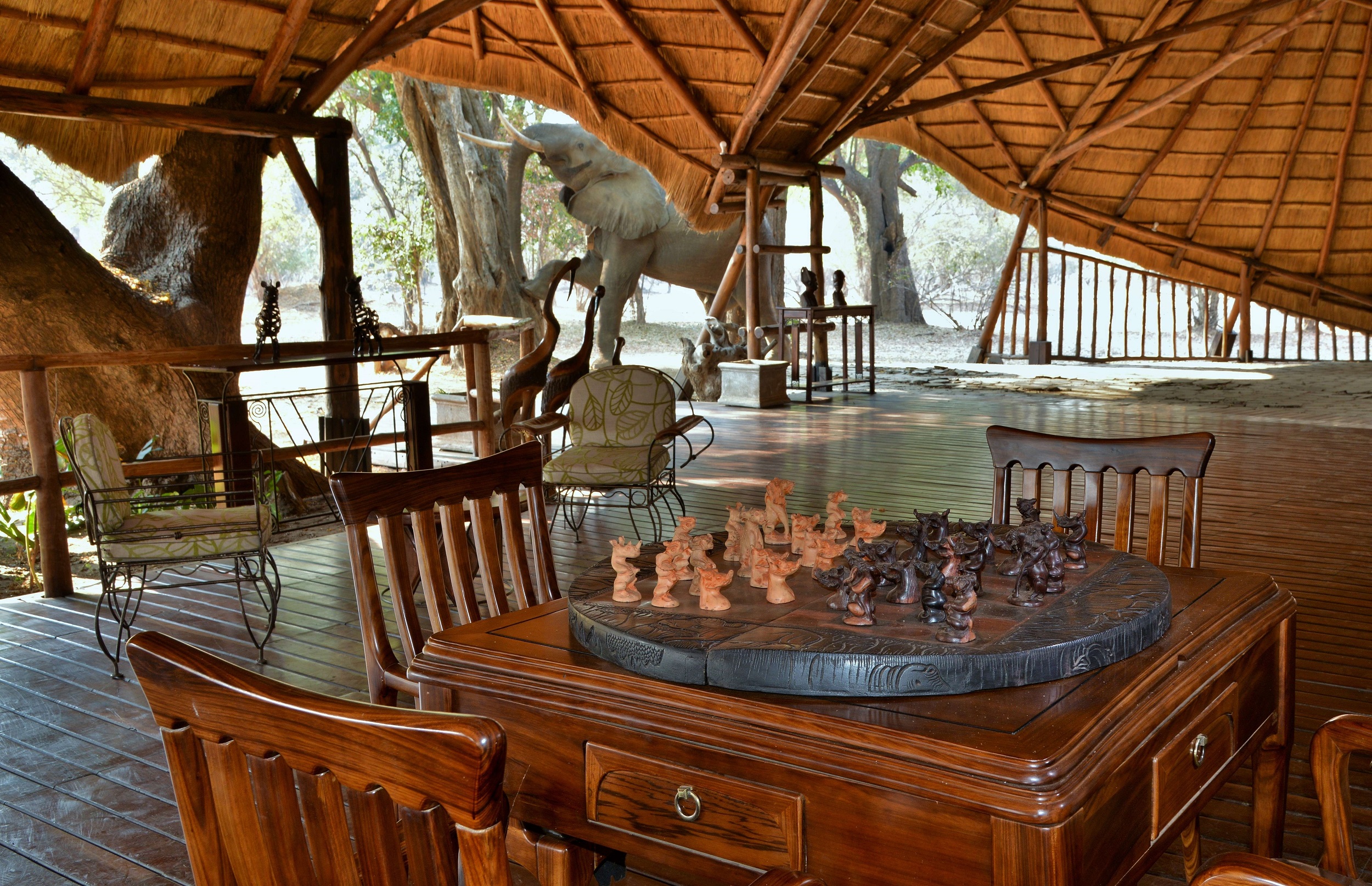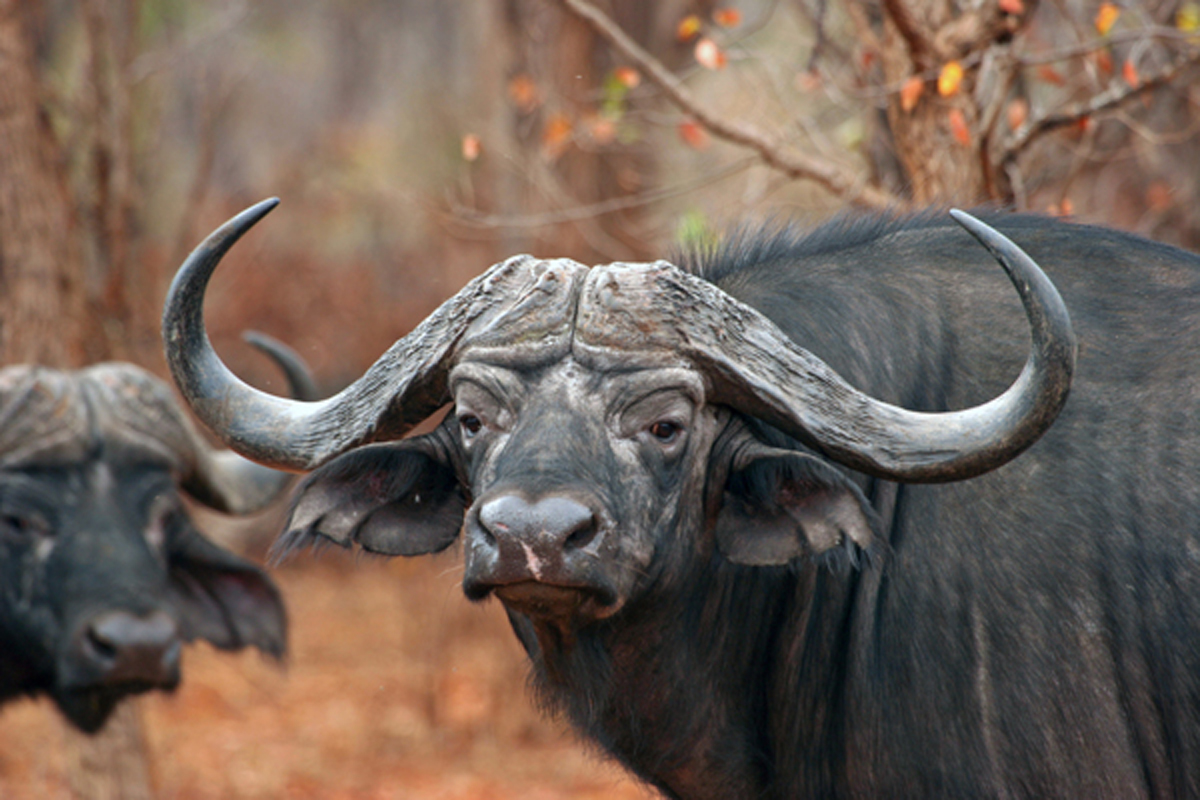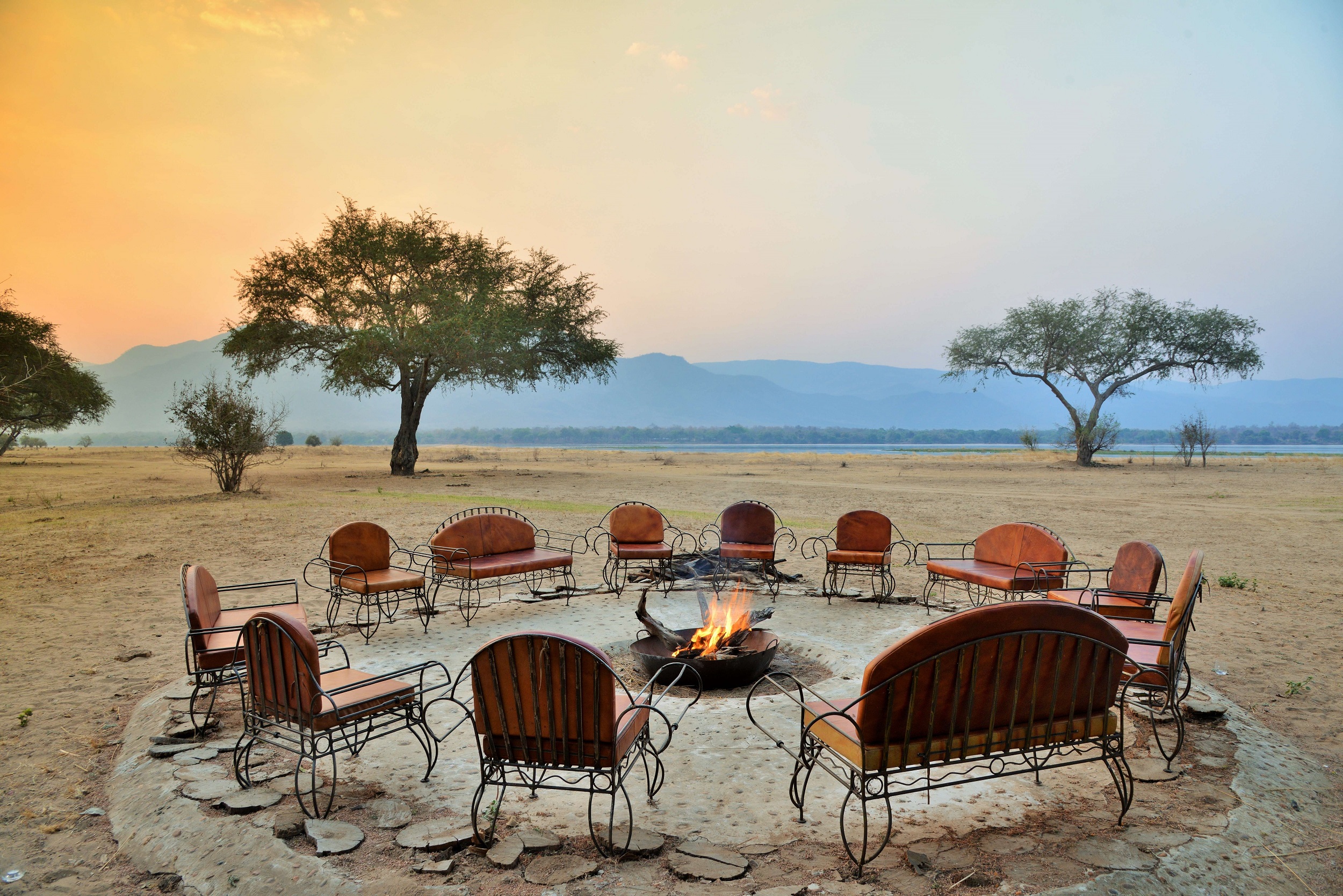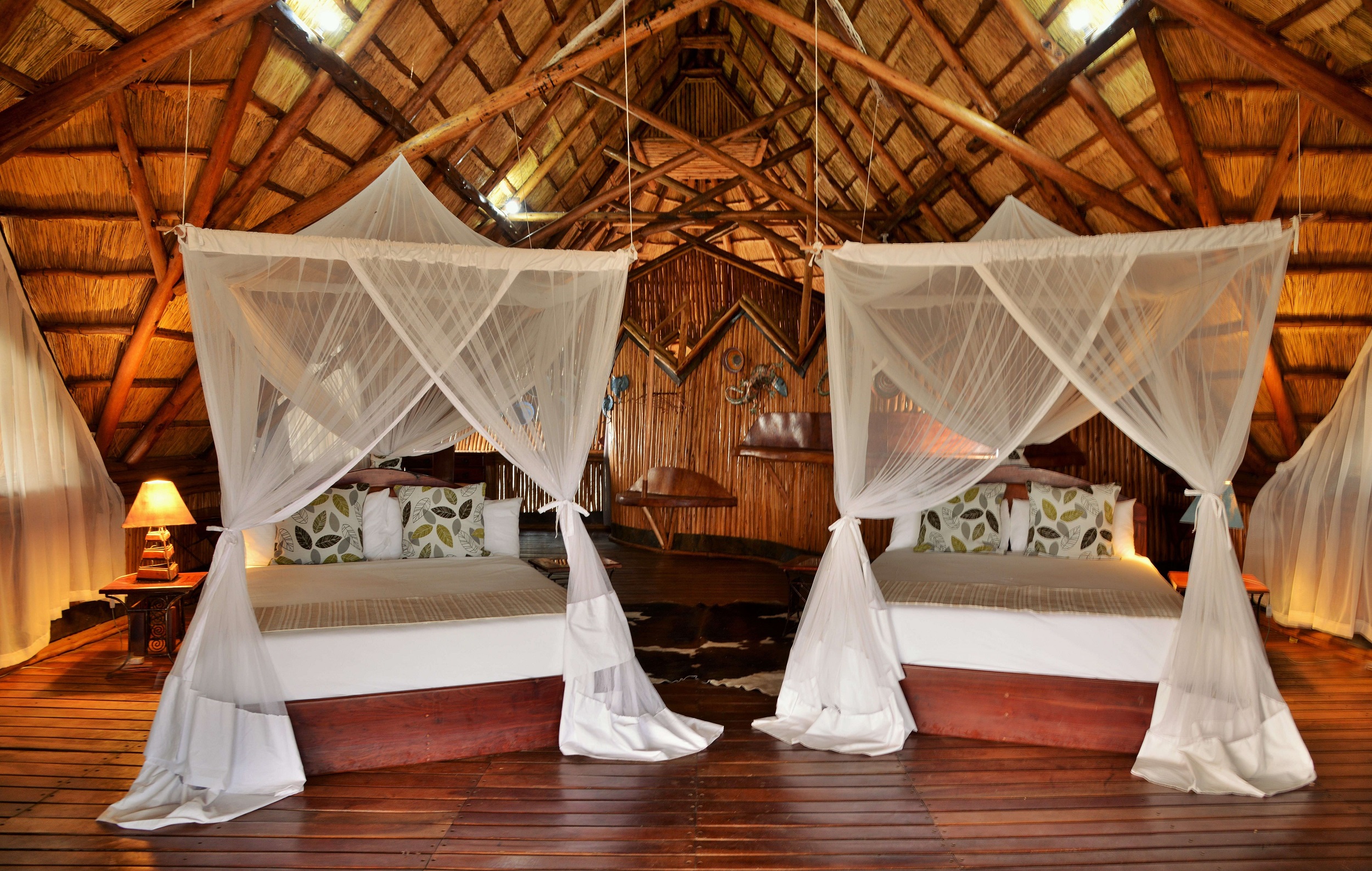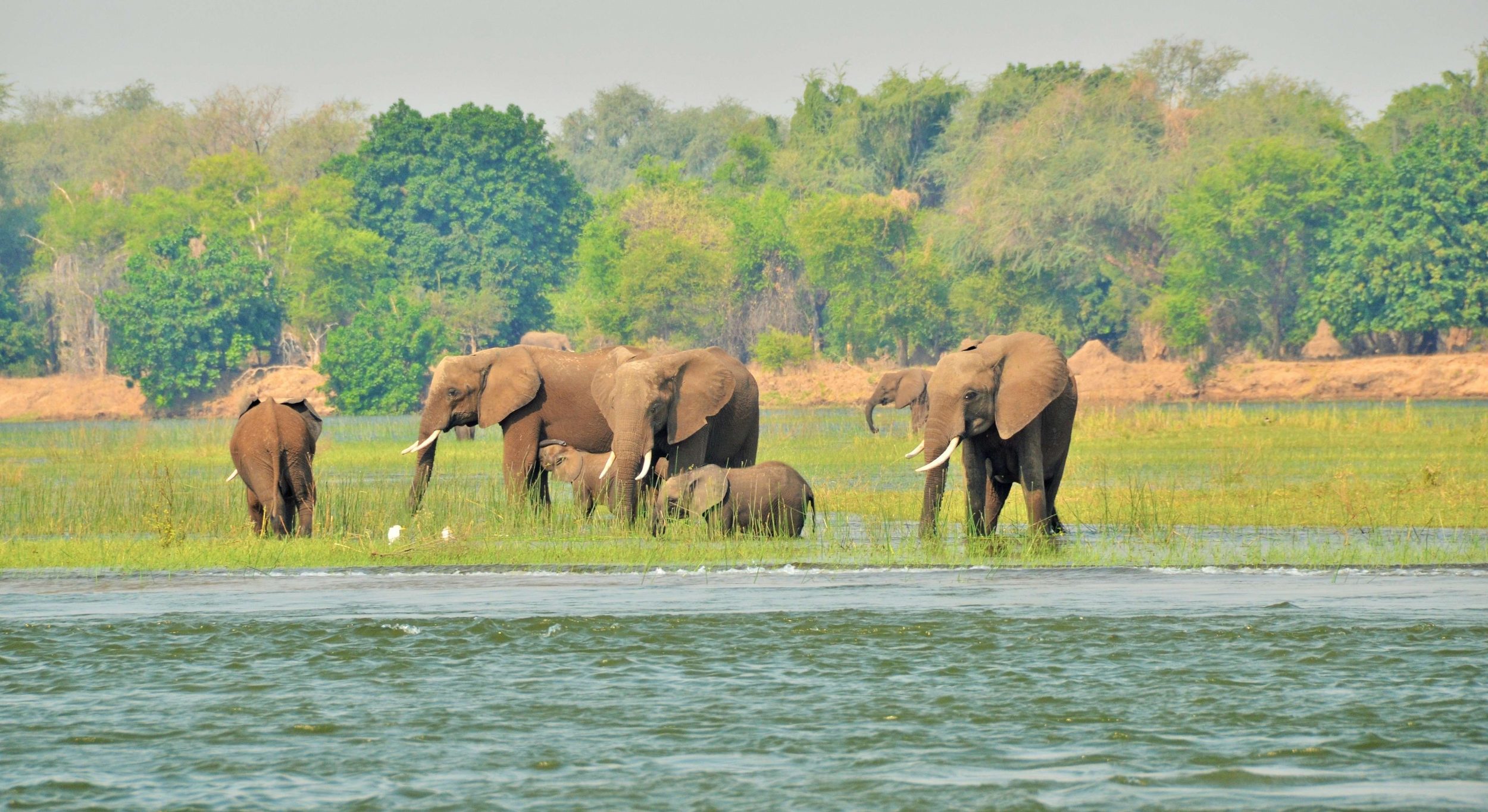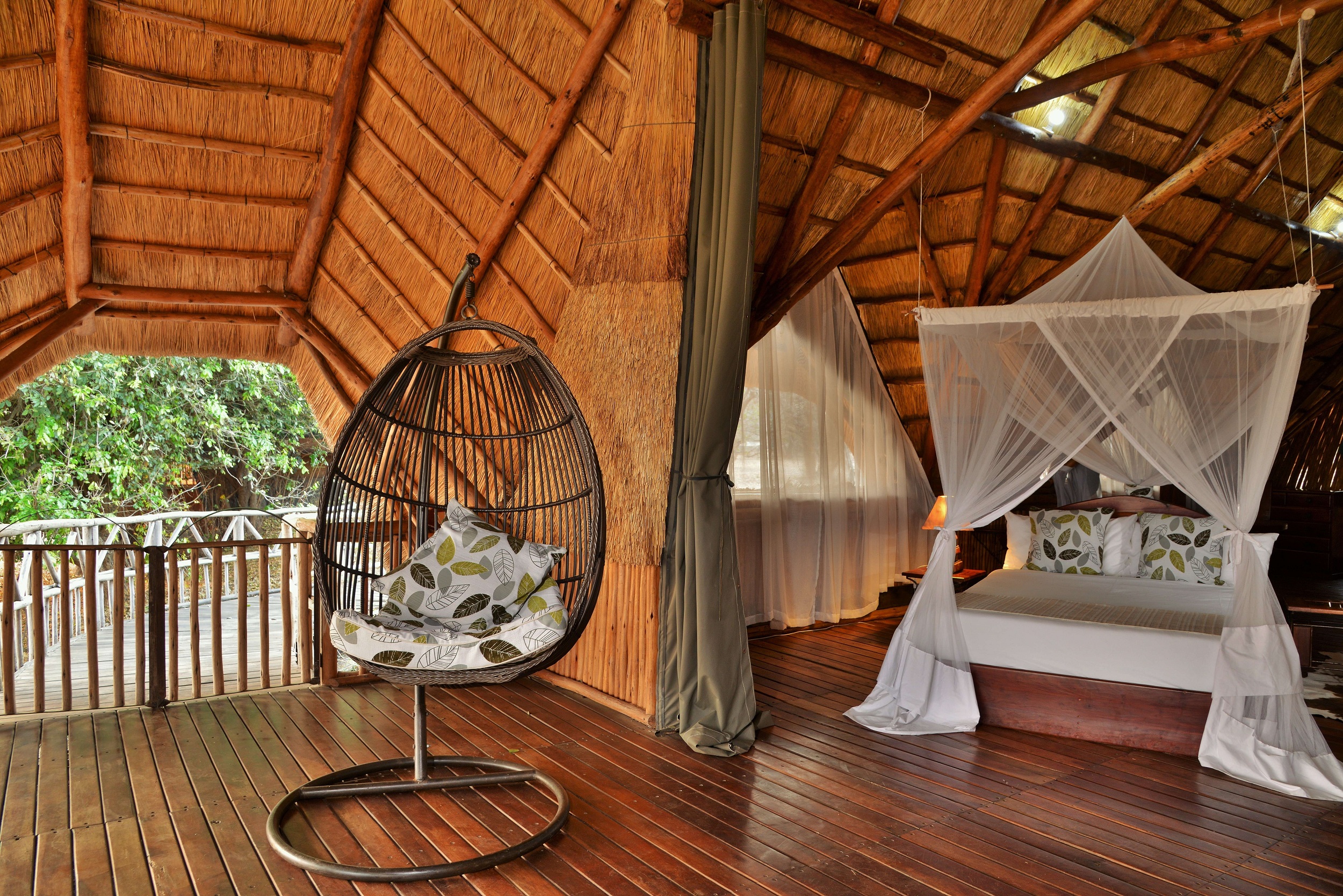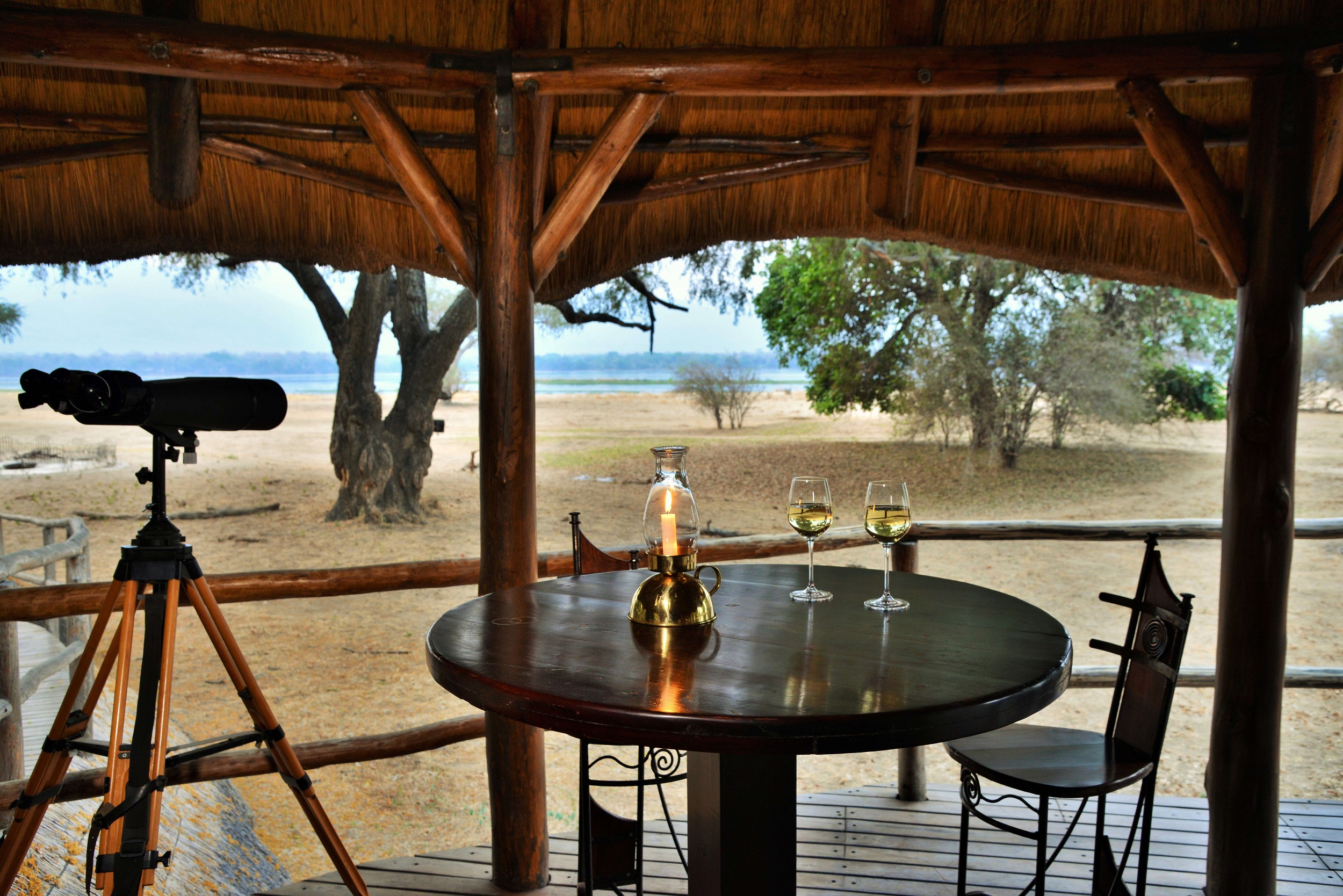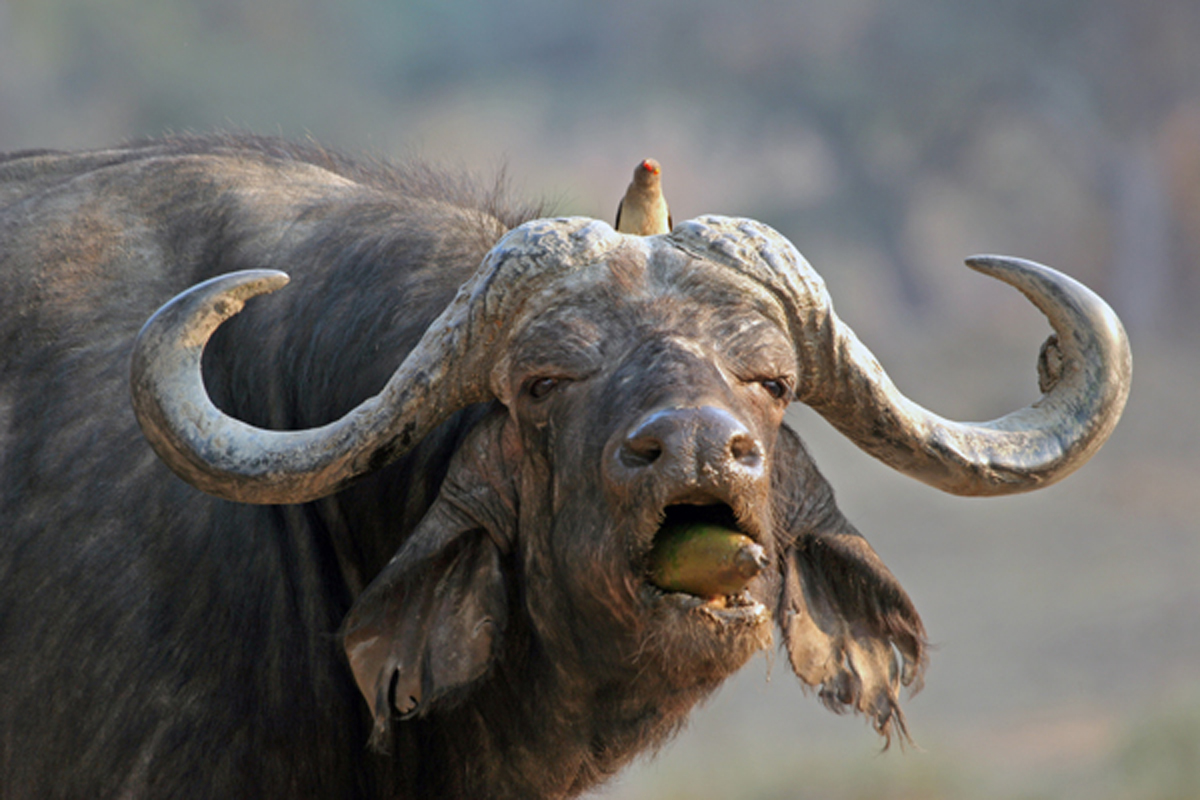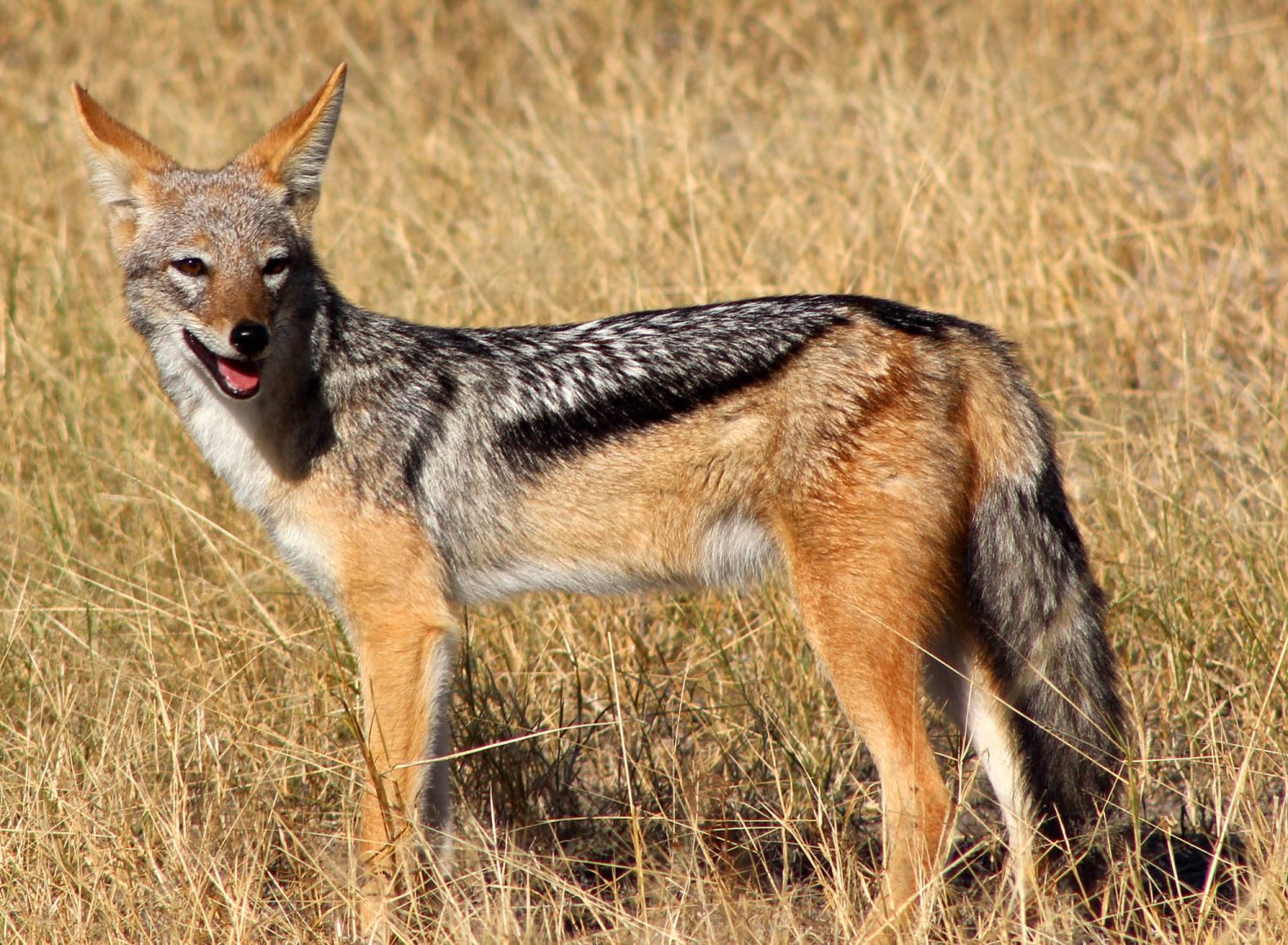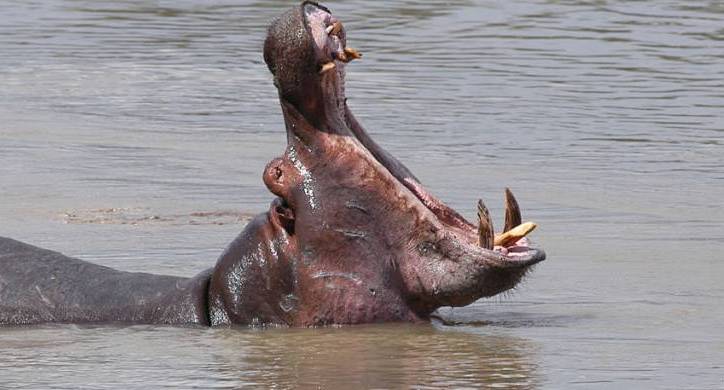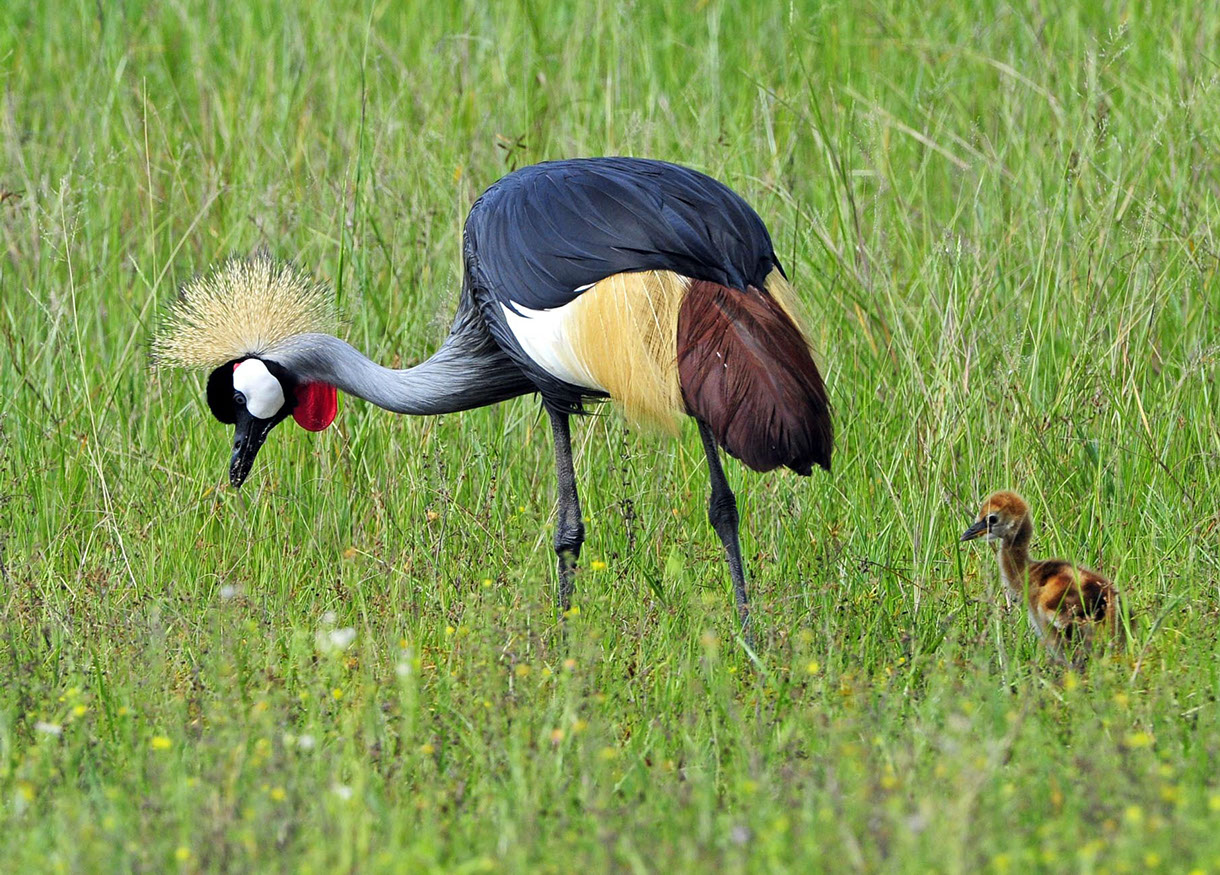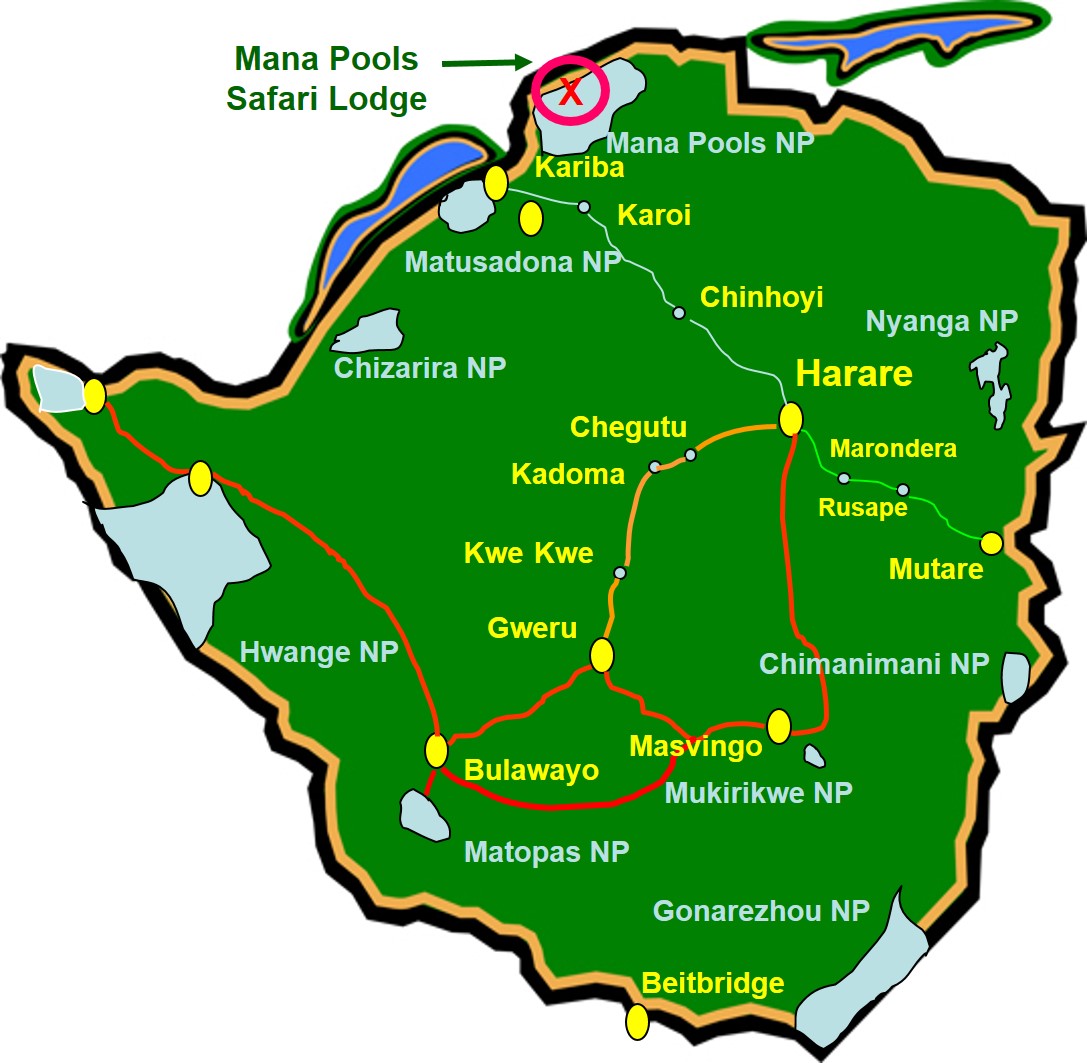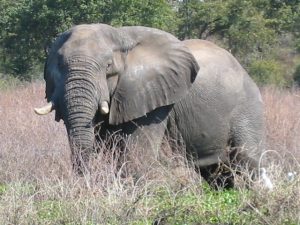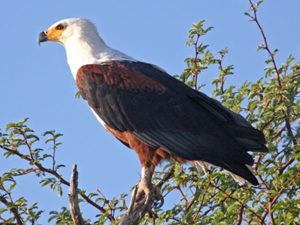Mana Pools Safari Lodge Situated on the South bank of the Zambezi River in the Mana Pools National Park
Mana Pools Safari Lodge nestles close to Mana Pools National Park’s eastern boundary at the Ruckomeshi River. Set amongst riverine figs, African mango and Apple-ring albida trees, the thatched chalets enjoy commanding views of the sweeping flood plains and mighty Zambezi River.
Frequented daily by majestic elephant, secretive kudu, buffalo, painted dogs and even lion – all of which often pass through the camp – the wildlife seemingly floats on shimmering heat waves, as they amble to the river to quench their thirsts.
As the only permanent luxury lodge within Mana Pools, the facility offers unparalleled comfort, game viewing and photographic opportunities, with Mana’s light and beauty unmatched anywhere on the African continent. The lodge has been tastefully built around many wild and ancient trees with a giant African Mango (Cordyla Africana) taking centre stage in the main dining and lounge area.
Visitors to Mana Pools experience the African wilderness in its ‘raw’ form, untainted by commercialisation. The park is characterised by its tranquillity, wide open spaces, close up wildlife experiences and unblemished natural terrain. It is renowned for its walking and canoe safaris and large numbers of wildlife, particularly crocodiles, hippos, buffalo and elephant. The impact of man has been minimal so it is common for visitors to have ‘close up’ sightings of wildlife in their natural state.
Mana Pools has the country’s biggest concentration of hippopotami and crocodiles and large dry season mammal populations of zebra, elephant and Cape buffalo. The area is also home to other threatened species including the lion, cheetah, Cape Hunting Dog (Painted Dog) and other endangered species such as the leopard and the brown hyena.

